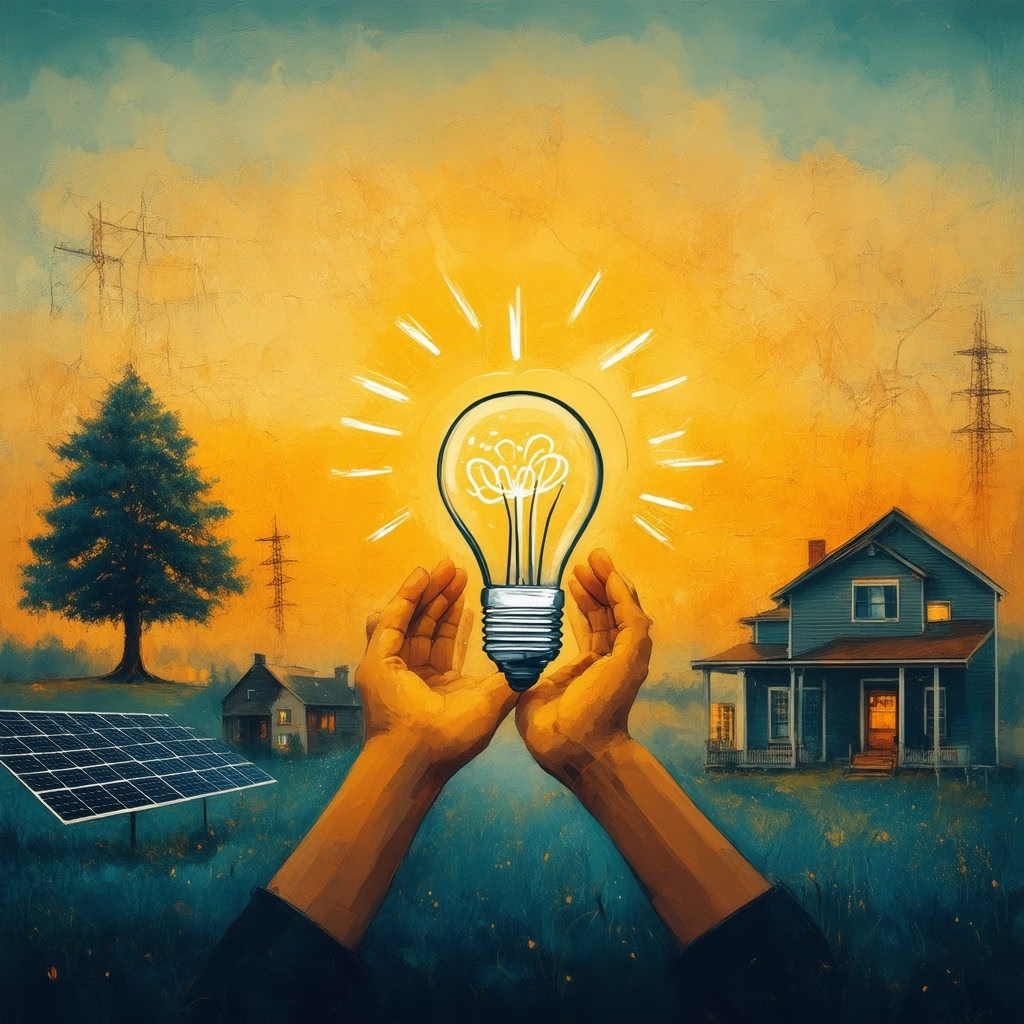Key Takeaways
- Utilities assistance programs provide essential financial relief for individuals and families struggling with utility bills, ensuring uninterrupted access to electricity, heating, and water.
- Programs like LIHEAP in North Carolina and the Maine Energy Relief Program offer crucial support for heating and cooling costs, tailored to low-income households.
- The New Jersey Energy Assistance Program (NJEAP) helps eligible residents manage energy costs through financial assistance and guidance on applications.
- Emergency help with utility bills is available through local nonprofits, state programs, and utility companies, providing immediate support during financial hardships.
- Exploring local resources and understanding eligibility criteria are vital steps to accessing the right utilities assistance programs for your needs.
In today’s challenging economic landscape, understanding utilities assistance programs is more crucial than ever. These programs provide essential support for individuals and families struggling to manage their utility bills, ensuring that access to electricity, heating, and water remains uninterrupted. This comprehensive guide will delve into various energy relief initiatives across states, including the Maine Energy Relief Program and the New Jersey Energy Assistance Program, highlighting their significance and application processes. Additionally, we will explore the benefits of the LIHEAP program in North Carolina and the Alabama Utility Grant Program, among others. For those in immediate need, we will provide resources for emergency help with utility bills and actionable steps to find local assistance. Join us as we uncover the vital information you need to navigate the landscape of utility assistance and secure the support necessary to alleviate financial burdens.
What is the Maine Energy Relief Program?
The Maine Energy Relief Program, primarily through the Low-Income Home Energy Assistance Program (LIHEAP), provides essential financial support to low-income households in Maine to help manage their heating costs. This program is crucial for both renters and homeowners, as it covers a variety of heating sources, including:
- Electric Heat: Assistance for those relying on electric heating systems.
- Oil: Support for households using oil as their primary heating fuel.
- Propane: Financial aid for those who heat their homes with propane.
- Natural Gas: Help for residents using natural gas for heating purposes.
- Other Sources: Coverage extends to alternative heating methods, ensuring comprehensive support.
LIHEAP is designed to alleviate the burden of heating expenses rather than cover them entirely. The program aims to reduce the financial strain on eligible households, particularly during the colder months when heating costs can significantly increase.
For more detailed information and eligibility requirements, residents can visit the Maine Public Utilities Commission (MPUC) website or contact local assistance offices. Additionally, resources such as Gov Guider may provide further guidance on accessing energy relief programs in Maine.
According to the U.S. Department of Health and Human Services, LIHEAP plays a vital role in ensuring that vulnerable populations have access to necessary heating resources, thereby promoting health and safety during extreme weather conditions. For further insights, refer to the official LIHEAP guidelines available at Maine.gov.
Overview of Energy Relief Programs in the U.S.
Energy relief programs across the United States are designed to assist low-income families in managing their utility expenses. These programs, including LIHEAP, provide critical support to ensure that households can maintain essential services such as heating and cooling. The availability of these programs varies by state, but they generally aim to help families avoid disconnection of services and ensure access to necessary energy resources.
Many states offer additional utilities assistance programs that complement federal initiatives. For instance, programs may provide direct financial assistance for utility bills, emergency electric assistance, and even grants for specific needs. Understanding the landscape of energy assistance programs is crucial for families seeking help with their utility bills.
Importance of Utilities Assistance Programs
Utilities assistance programs play a vital role in supporting low-income families, particularly during times of economic hardship. These programs not only help with electric bills but also provide comprehensive support for various utility expenses, including water and gas. By alleviating the financial burden of utility costs, these programs contribute to the overall well-being of families, allowing them to allocate resources toward other essential needs such as food and healthcare.
Moreover, the importance of these programs extends beyond financial relief. They also promote energy efficiency and sustainability by encouraging households to seek out energy-saving practices. Many utilities assistance programs offer educational resources and incentives for families to reduce their energy consumption, ultimately leading to lower bills and a reduced environmental impact.
For those seeking assistance, it is essential to explore local options and understand the eligibility criteria for various programs. Resources like Gov Guider can provide valuable insights into available utilities assistance programs tailored to individual needs.

What is the New Jersey Energy Assistance Program?
The New Jersey Energy Assistance Program (NJEAP) is designed to assist low-income households in managing their energy costs, particularly during the colder months. This program encompasses several key components:
Understanding NJ Utilities Assistance Programs
- Home Energy Assistance Program (HEAP): HEAP provides financial assistance to eligible New Jersey residents to help cover heating expenses. This includes payments for heating bills and certain medically necessary cooling costs during extreme heat conditions.
- Eligibility Criteria: To qualify for HEAP, applicants must meet specific income guidelines, which are updated annually. Households that include individuals who are elderly, disabled, or have children under the age of 18 may receive priority assistance.
- Application Process: Interested individuals can apply for HEAP through the New Jersey Division of Family Development (DFD) or local community action agencies. The application process typically requires proof of income, residency, and energy costs.
- Additional Support Programs: Beyond HEAP, NJEAP also includes programs like the Universal Service Fund (USF) and the Low-Income Home Energy Assistance Program (LIHEAP), which provide further assistance for energy bills and energy efficiency upgrades.
- Resources and Information: For more detailed information, residents can visit the official New Jersey government website at NJ.gov or contact local agencies that administer these programs.
- Gov Guider: For personalized assistance and guidance on navigating energy assistance options, residents can utilize Gov Guider, a resource designed to help New Jerseyans access state services effectively.
By leveraging these programs, New Jersey residents can alleviate the financial burden of energy costs, ensuring that they maintain a safe and comfortable living environment throughout the year. For further details, refer to the New Jersey Department of Community Affairs and the Division of Family Development resources.
How to Apply for Utility Assistance in New Jersey
Applying for utility assistance in New Jersey is a straightforward process designed to help those in need. Here’s how you can get started:
- Gather Required Documentation: Before applying, ensure you have all necessary documents, including proof of income, residency, and energy costs. This documentation is crucial for verifying your eligibility for the utilities assistance program.
- Visit Local Agencies: Applications can be submitted through local community action agencies or the New Jersey Division of Family Development. These agencies can provide guidance and support throughout the application process.
- Online Application: Some programs may offer online applications. Check the New Jersey Division of Family Development website for any available online services that can expedite your application.
- Follow Up: After submitting your application, it’s important to follow up with the agency to ensure your application is being processed and to address any additional requirements they may have.
- Explore Additional Resources: For more assistance, consider reaching out to organizations that specialize in utility bill assistance, such as Consumer Financial Protection Bureau or local non-profits that focus on helping families with energy costs.
By taking these steps, you can access the necessary support to help manage your utility bills effectively. For further information on utility assistance programs, visit assistance for utilities.
How much does LIHEAP pay in North Carolina?
The Low-Income Home Energy Assistance Program (LIHEAP) in North Carolina provides essential financial assistance to eligible households to help with heating and cooling costs. This program is crucial for families struggling to manage their utility bills, especially during extreme weather conditions. Understanding the benefits offered by LIHEAP can significantly aid those in need of utility bill assistance.
Overview of LIHEAP and Its Benefits
LIHEAP offers various forms of assistance tailored to the specific energy needs of households. The benefits can vary based on income, household size, and the specific energy requirements of the family. Here’s a breakdown of the types of assistance available:
- Heating Assistance: During the heating season, eligible households can receive a one-time payment ranging from $300 to $1,000. This amount is determined by the North Carolina Division of Social Services based on household income and size.
- Cooling Assistance: Similar to heating assistance, LIHEAP provides support during the cooling season, with benefits also ranging from $300 to $1,000. This assistance is particularly aimed at households with vulnerable members, such as the elderly or young children.
- Crisis Assistance: For energy emergencies, LIHEAP offers crisis assistance year-round. This can cover costs related to energy disconnection or necessary emergency repairs, with maximum benefits reaching up to $1,000 depending on the situation.
To qualify for LIHEAP in North Carolina, households must meet specific income guidelines, typically set at 130% of the federal poverty level. For the most accurate and updated information regarding benefit levels and eligibility, it is advisable to consult the North Carolina Division of Social Services or visit their official website.
Eligibility Criteria for LIHEAP in North Carolina
Eligibility for LIHEAP is primarily based on income, household size, and specific circumstances. Here are the key criteria:
- Income Limits: Households must have an income that does not exceed 130% of the federal poverty level. This ensures that assistance is directed toward those most in need.
- Household Composition: The size of the household plays a significant role in determining eligibility and benefit amounts. Larger households may qualify for higher assistance levels.
- Vulnerability Factors: Households with elderly members, young children, or individuals with disabilities may receive priority for assistance, particularly during crisis situations.
For more detailed information on eligibility and to explore additional resources, you can visit the assistance for utilities page on Gov Guider.
What is the Alabama Utility Grant Program?
The Alabama Utility Grant Program is designed to assist low-income households in managing their energy costs, ensuring that families can maintain safe and comfortable living conditions throughout the year. This program encompasses several key components:
- Low-Income Home Energy Assistance Program (LIHEAP): This federally funded initiative provides financial assistance to eligible low-income households for heating and cooling expenses. LIHEAP aims to alleviate the burden of energy costs, particularly during extreme weather conditions. According to the U.S. Department of Health and Human Services, LIHEAP helps families maintain safe indoor temperatures, which is crucial for health and well-being.
- Eligibility Requirements: To qualify for LIHEAP, households must meet specific income guidelines, which are typically set at or below 150% of the federal poverty level. Additionally, applicants may need to provide documentation of their energy costs and household composition.
- Application Process: Eligible residents can apply for assistance through local community action agencies or the Alabama Department of Economic and Community Affairs (ADECA). The application process may vary by county, so it is essential to check local resources for specific instructions.
- Additional Support Programs: Beyond LIHEAP, Alabama Power and other utility providers may offer additional payment assistance programs, such as budget billing and energy efficiency programs, to help customers manage their energy expenses more effectively.
- Resources for Assistance: For more information on the Alabama Utility Grant Program and to access application forms, residents can visit the Alabama Department of Economic and Community Affairs website or contact their local utility provider.
Exploring Utility Assistance Programs in Alabama
In addition to the Alabama Utility Grant Program, various utility assistance programs are available to help residents manage their energy bills. These programs often include:
- Emergency Utility Assistance: This program provides immediate financial support for families facing crisis situations, such as sudden job loss or medical emergencies, ensuring they can pay their utility bills on time.
- Energy Efficiency Initiatives: Many utility companies in Alabama offer programs aimed at improving energy efficiency in homes. These initiatives can help reduce overall energy consumption, leading to lower utility bills.
- Payment Plans: Utility providers may offer flexible payment plans to help customers spread out their energy costs over time, making it easier to manage monthly expenses.
By exploring these options, residents can find the necessary support to alleviate the financial strain of utility bills and maintain essential services.

What is the New Deal energy program?
The New Deal energy program, often referred to in the context of the Green New Deal, is a comprehensive initiative aimed at addressing climate change while promoting economic growth and social equity. It draws inspiration from President Franklin D. Roosevelt’s New Deal of the 1930s, which focused on economic recovery during the Great Depression, and adapts it to contemporary challenges related to energy and environmental sustainability.
Historical Context of Energy Assistance Programs
Energy assistance programs have evolved significantly since the original New Deal, which introduced various initiatives to support struggling families. Today, these programs, including utilities assistance programs, aim to provide critical support to low-income households facing high energy costs. The historical context highlights the ongoing need for government intervention in energy markets to ensure equitable access to essential services.
Modern Implications of New Deal Energy Initiatives
Key components of the New Deal energy program include:
- Investment in Renewable Energy: The program advocates for significant investments in renewable energy sources such as solar, wind, and hydropower. This shift aims to reduce reliance on fossil fuels and decrease greenhouse gas emissions, aligning with global climate goals.
- Energy Efficiency Improvements: Enhancing energy efficiency in buildings, transportation, and industry is a critical aspect. This includes retrofitting existing structures and promoting energy-efficient appliances, which can lead to substantial cost savings and reduced energy consumption.
- Job Creation: The New Deal energy program emphasizes the creation of green jobs in the renewable energy sector. This includes training programs to equip workers with the skills needed for jobs in solar installation, wind turbine maintenance, and energy auditing.
- Infrastructure Development: Investment in modernizing the energy grid and expanding public transportation systems is essential. This infrastructure development not only supports renewable energy integration but also enhances accessibility and reduces carbon footprints.
- Social Equity: The program aims to ensure that the transition to a green economy is equitable, addressing the needs of marginalized communities disproportionately affected by climate change and pollution. This includes access to clean energy and job opportunities.
Recent proposals for the Green New Deal have gained traction in various regions, particularly in the United States, where they have sparked discussions about sustainable economic policies. According to a report by the United Nations, transitioning to renewable energy could create millions of jobs globally while mitigating climate change impacts.
Emergency help with utility bills
When facing unexpected financial hardships, emergency help with utility bills can be a crucial lifeline. Various resources are available to assist individuals and families in managing their utility expenses, ensuring that essential services like electricity, gas, and water remain uninterrupted. Understanding these resources can help you navigate the options available for immediate assistance.
Resources for Immediate Utility Bill Assistance
Several programs and organizations provide emergency utility bill assistance. Here are some key resources to consider:
- LIHEAP: The Low Income Home Energy Assistance Program (LIHEAP) offers financial assistance to low-income households for heating and cooling costs. You can find more information about LIHEAP and its benefits here.
- Local Nonprofits: Many local nonprofit organizations and charities provide emergency utility assistance. Organizations like the Salvation Army and Catholic Charities often have programs in place to help with electric bills and other utilities.
- State Programs: Each state has its own utility assistance programs. For example, New Jersey offers the NJ Energy Assistance program, which can provide help with utility bills for eligible residents. More details can be found on the New Jersey Energy Assistance website.
- Utility Companies: Many utility companies have their own assistance programs. Contact your utility provider directly to inquire about any available assistance programs for customers facing financial difficulties.
How to Find Emergency Utility Assistance Programs Near You
Finding emergency utility assistance programs near you can be straightforward if you know where to look. Here are some steps to help you locate the right resources:
- Online Searches: Use search terms like “utilities assistance program near me” or “emergency utility assistance [your state]” to find local resources.
- Government Websites: Visit government websites such as USA.gov to find information about state-specific assistance programs.
- Community Centers: Local community centers often have information about available assistance programs. They can guide you to resources that can help with utility bills.
- Social Services: Contact your local social services office for information on emergency assistance programs available in your area.
Need help paying bills ASAP
When you find yourself in a situation where you need help with utility bills, it’s crucial to act quickly and explore your options. Various utilities assistance programs are available that can provide immediate relief. Here are the steps you can take to secure the assistance you need.
Steps to Take When You Need Help with Utility Bills
- Assess Your Situation: Determine how much you owe and the urgency of your situation. This will help you identify the right programs for your needs.
- Research Available Programs: Look for local utilities assistance programs near you. Many states offer programs like LIHEAP (Low Income Home Energy Assistance Program) that can help with electric bills and other utilities.
- Gather Necessary Documentation: Prepare documents such as proof of income, utility bills, and identification. This will streamline the application process for utility bill assistance.
- Contact Utility Providers: Reach out to your utility companies directly. They may have their own assistance programs or be able to guide you to local resources.
- Apply for Assistance: Complete applications for the programs you qualify for. Be sure to follow up to ensure your application is processed promptly.
Local Resources for Utility Bill Assistance Programs
Finding local resources for utility bill assistance can significantly ease your financial burden. Here are some options to consider:
- Community Action Agencies: These organizations often provide utility assistance programs tailored to low-income families. They can help you navigate available resources.
- Nonprofit Organizations: Groups like the Salvation Army and local churches may offer emergency electric assistance or help with light bills.
- State and Local Government Programs: Check your state’s government website for specific programs available in your area, such as New Jersey Energy Assistance or LIHEAP.
- Online Resources: Websites like Lifeline Assistance Program provide information on various assistance programs available nationwide.
By taking these steps and utilizing local resources, you can find the help you need to manage your utility bills effectively. Remember, you are not alone, and there are programs designed to assist you during tough times.




